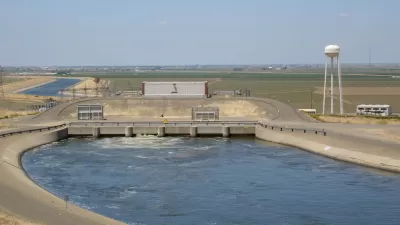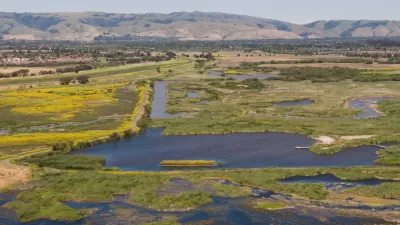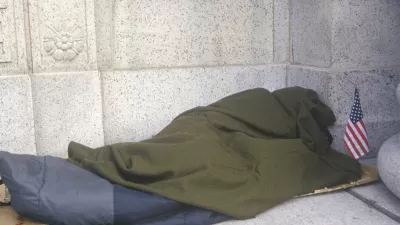The legislature placed a $4.1 billion water bond on the ballot in June while a privately funded initiative hopes to qualify an $8.9 billion water bond for the November ballot. The state measure would also fund parks and trails.

"California has a long history of using bonds to finance major water projects," reports Kurtis Alexander for the San Francisco Chronicle on Nov. 24. "More than a dozen have been approved since the 1970s."
In fact, Alexander notes that there is $2.7 billion remaining from a $7 billion, 2014 bond measure, Proposition 1, which agribusiness hopes will be used for new reservoirs. Neither of the two bond measures next year would fund new dams.
"The Legislature’s $4.1 billion [general obligation] bond measure on the June ballot was forged as a compromise among several interest groups," writes Alexander. The measure was authorized in October after Gov. Jerry Brown signed SB 5: "California Drought, Water, Parks, Climate, Coastal Protection, and Outdoor Access For All Act of 2018," authored by Senate President Pro Tem Kevin de León (D-Los Angeles).
Its water-related components lean away from traditional infrastructure projects such as new dams, and toward funding for recycling, construction of flood-control levees and cleanup of polluted waterways.
Close to half the bond money, however, would have little or nothing to do with water projects. Some would go to park acquisition and maintenance, much of it in Southern California. Money would be allocated for trail construction and land conservation in the Bay Area. Low-income communities would be given priority for the funding.
"The other bond measure is being headed by Jerry Meral, a former deputy director of the California Department of Water Resources and a longtime water-project advocate," adds Alexander.
Meral supports the Legislature’s bond but says it wouldn’t go far enough. He is leading a signature drive to qualify an $8.9 billion bond for the November ballot, and appears to have the financial support, largely from farmers, to get it there.
Like the Legislature’s measure, Meral’s proposed bond would support recycling, groundwater and clean-up programs. But it would also pay for traditional water projects such as improved canals for farm irrigation in the Central Valley....[and] include $200 million for Oroville Dam repairs and millions more for other reservoir upgrades.
No opposition is sited for the state measure, unlike the private initiative. "Some worry about the high price, while the Sierra Club calls it a 'pay-for-play' deal that will serve big growers and other wealthy water users," writes Alexander. However, it does have support of urban water suppliers and wildlife group.
Backgrouind information on the private initiative can be found in this August Planning Report interview of Jerry Meral and Brian Jordan, vice president of civil engineering firm Tetra Tech. Meral refers to the potential measure as the "Joe Caves’ initiative" who is with the Conservation Strategy Group.
FULL STORY: Multibillion-dollar water measures heading to state ballot

Alabama: Trump Terminates Settlements for Black Communities Harmed By Raw Sewage
Trump deemed the landmark civil rights agreement “illegal DEI and environmental justice policy.”

Study: Maui’s Plan to Convert Vacation Rentals to Long-Term Housing Could Cause Nearly $1 Billion Economic Loss
The plan would reduce visitor accommodation by 25% resulting in 1,900 jobs lost.

Why Should We Subsidize Public Transportation?
Many public transit agencies face financial stress due to rising costs, declining fare revenue, and declining subsidies. Transit advocates must provide a strong business case for increasing public transit funding.

Paris Bike Boom Leads to Steep Drop in Air Pollution
The French city’s air quality has improved dramatically in the past 20 years, coinciding with a growth in cycling.

Why Housing Costs More to Build in California Than in Texas
Hard costs like labor and materials combined with ‘soft’ costs such as permitting make building in the San Francisco Bay Area almost three times as costly as in Texas cities.

San Diego County Sees a Rise in Urban Coyotes
San Diego County experiences a rise in urban coyotes, as sightings become prevalent throughout its urban neighbourhoods and surrounding areas.
Urban Design for Planners 1: Software Tools
This six-course series explores essential urban design concepts using open source software and equips planners with the tools they need to participate fully in the urban design process.
Planning for Universal Design
Learn the tools for implementing Universal Design in planning regulations.
Smith Gee Studio
Alamo Area Metropolitan Planning Organization
City of Santa Clarita
Institute for Housing and Urban Development Studies (IHS)
City of Grandview
Harvard GSD Executive Education
Toledo-Lucas County Plan Commissions
Salt Lake City
NYU Wagner Graduate School of Public Service





























